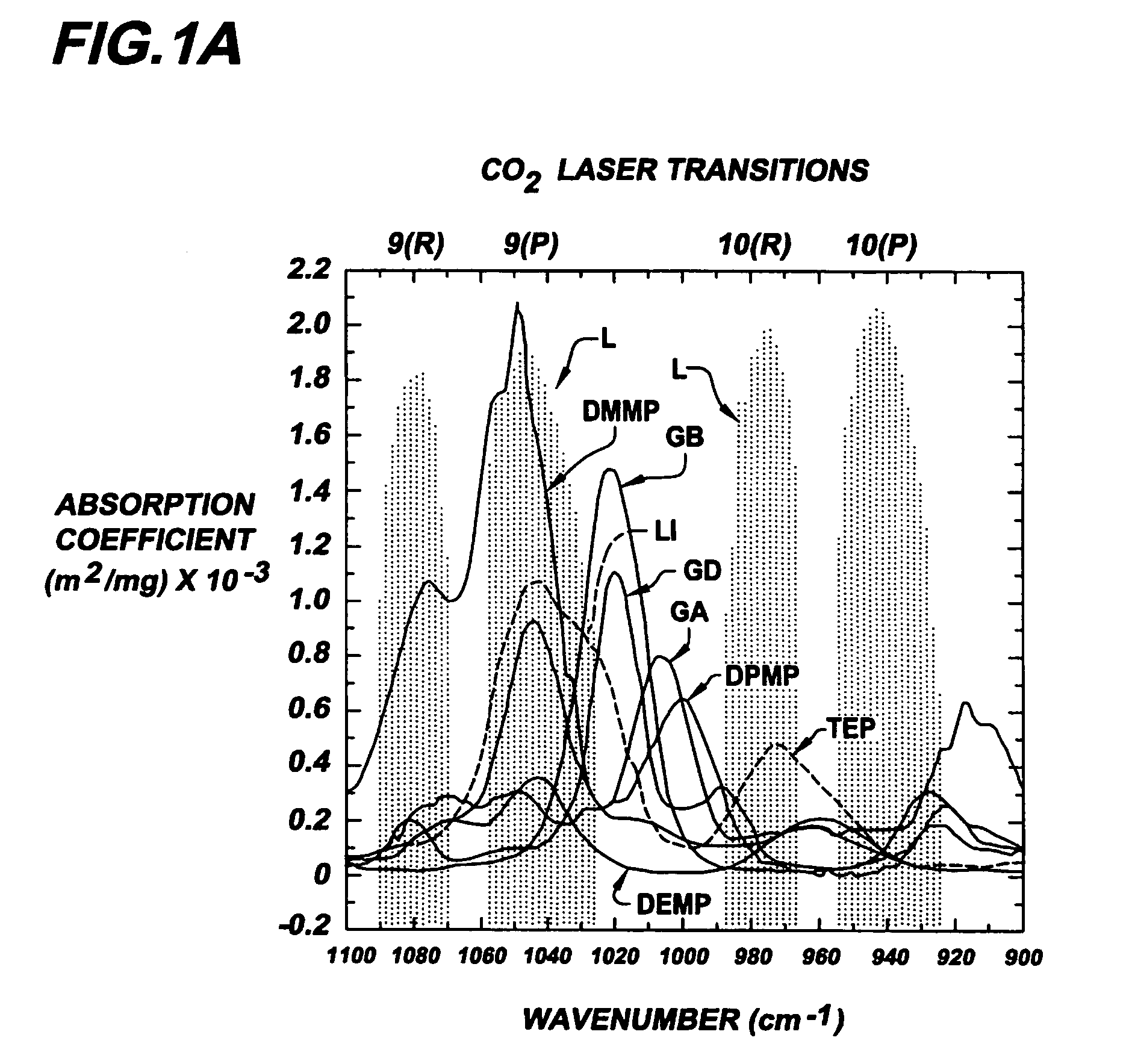System and method for detecting and identifying an analyte
a technology of analyte detection and identification method, applied in the field of automatic testing, can solve the problems of difficult or impractical placement of testing equipment, difficult or impractical retrieval of samples, and inability to adapt to a number of applications
- Summary
- Abstract
- Description
- Claims
- Application Information
AI Technical Summary
Problems solved by technology
Method used
Image
Examples
Embodiment Construction
[0044] Referring now to FIG. 2, there is shown in accordance with the present invention an analyte detecting and identifying system, or “sensor,” which is generally denoted by the numeral 200. In general, sensor 200 is operatively configured to detect the presence of and / or identify one or more analytes 204 of interest in a sample region 208 by directing spectral energy into the region and sensing this energy, or lack thereof, after it passes out of the region. As is well known, due to their chemical structure different analytes have different spectral absorption characteristics across various wavelengths, much like different human finger prints have different patterns of ridges and valleys. These spectral absorption characteristics, being unique to the analyte, allow analytes to be detected and identified.
[0045] Identifying an analyte, such as analyte 204, generally involves chemical identification and / or biological identification. In chemical identification, an analyte may be ide...
PUM
| Property | Measurement | Unit |
|---|---|---|
| Length | aaaaa | aaaaa |
| Size | aaaaa | aaaaa |
| Energy | aaaaa | aaaaa |
Abstract
Description
Claims
Application Information
 Login to View More
Login to View More - R&D
- Intellectual Property
- Life Sciences
- Materials
- Tech Scout
- Unparalleled Data Quality
- Higher Quality Content
- 60% Fewer Hallucinations
Browse by: Latest US Patents, China's latest patents, Technical Efficacy Thesaurus, Application Domain, Technology Topic, Popular Technical Reports.
© 2025 PatSnap. All rights reserved.Legal|Privacy policy|Modern Slavery Act Transparency Statement|Sitemap|About US| Contact US: help@patsnap.com



